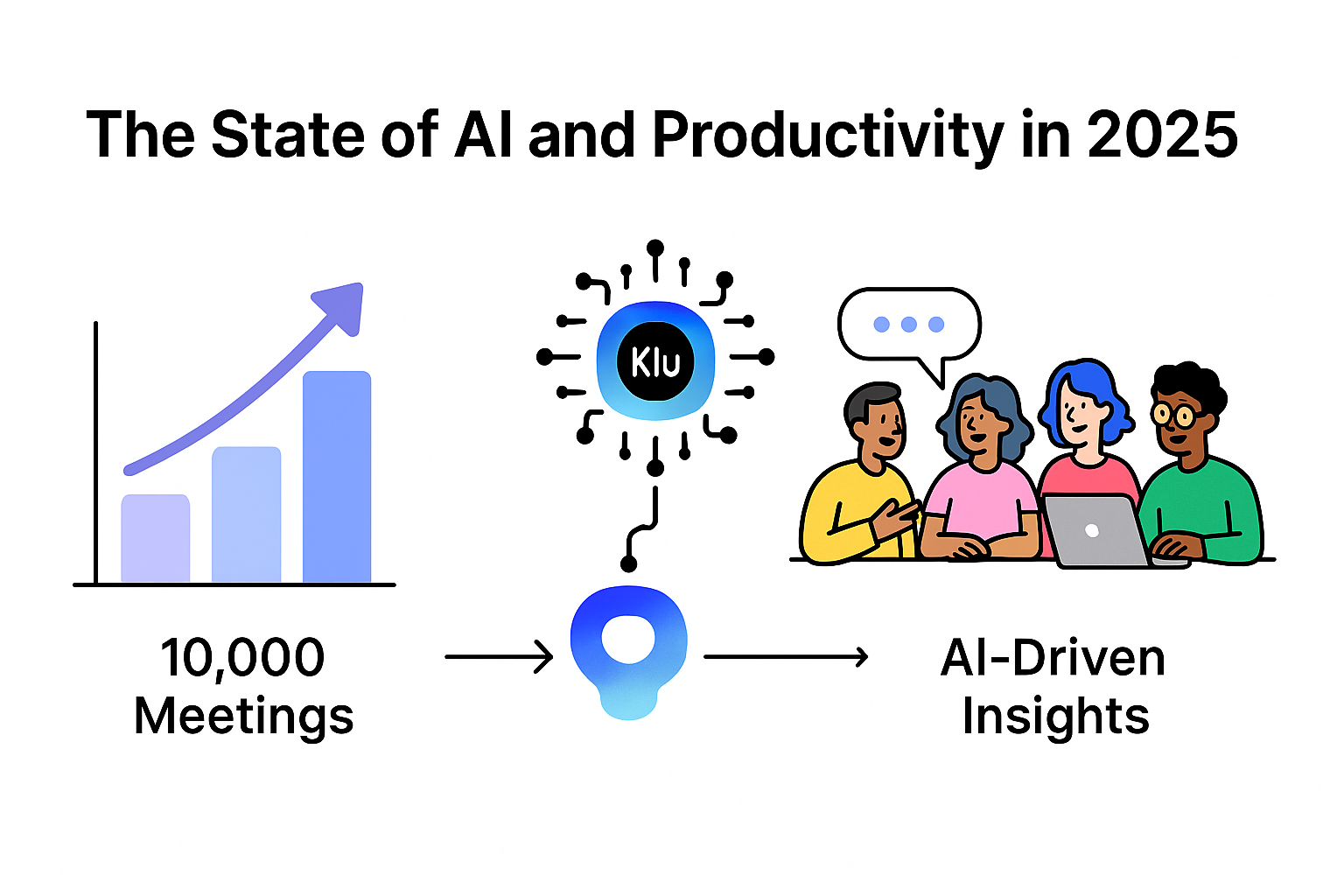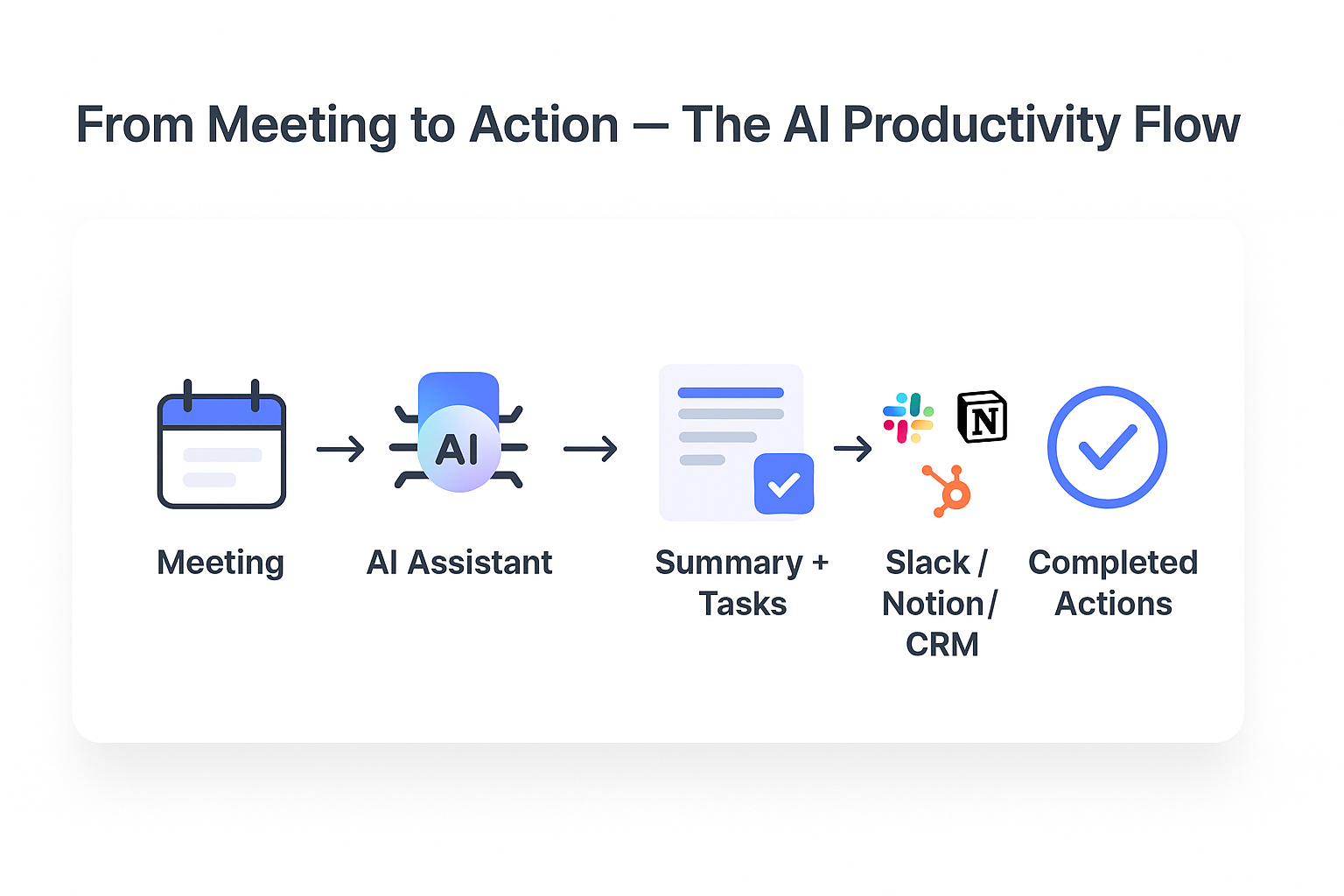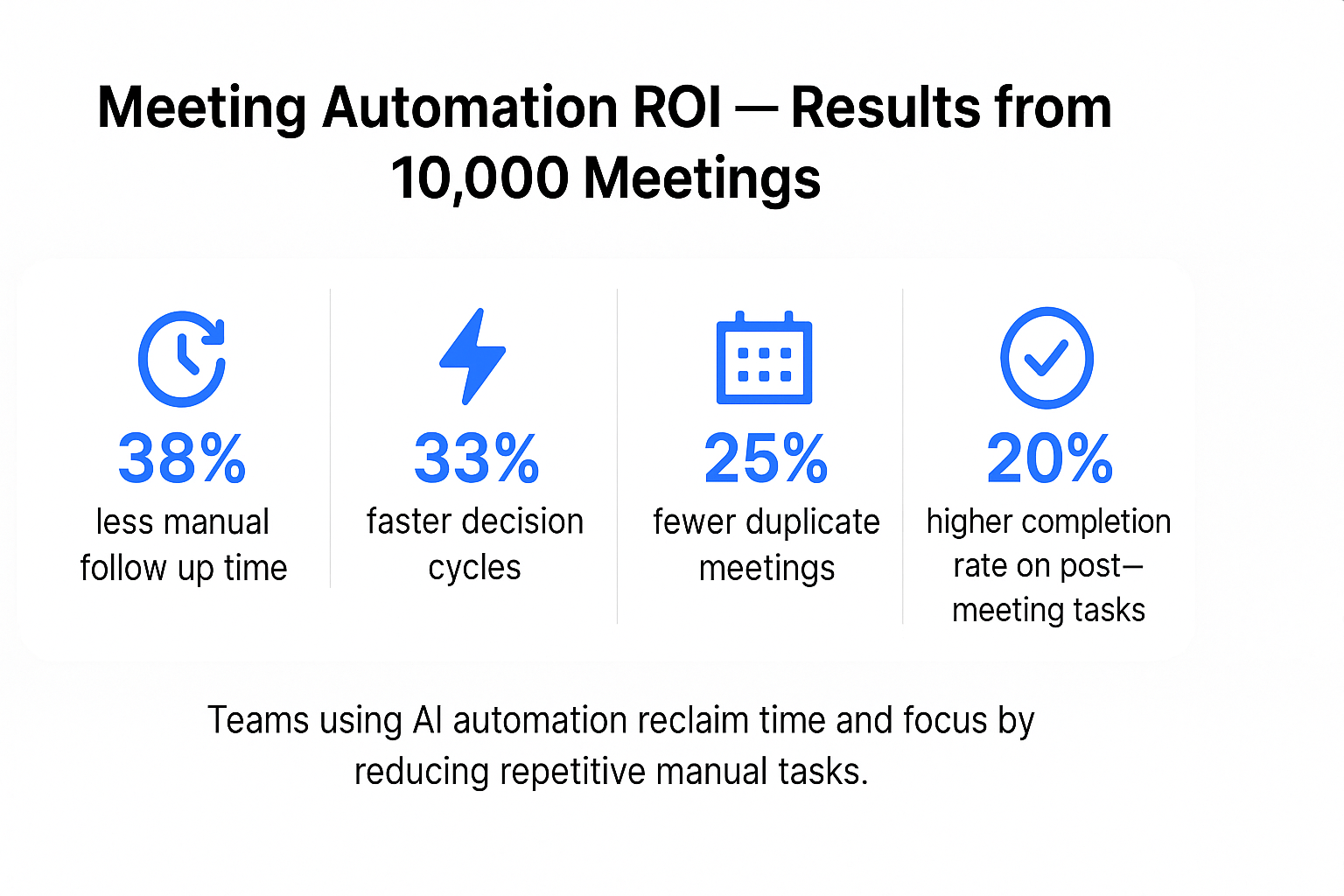 Sami AZ
Sami AZ
As teams around the world continue to adapt to hybrid work and digital collaboration, the focus has shifted to how work gets done, not just where. Artificial intelligence has become a core part of the productivity stack in 2025.
From scheduling and note taking to meeting follow ups, automation is reshaping workflows. At the same time, the volume and purpose of meetings are evolving. Our analysis of more than 10,000 real meetings reveals significant changes in how teams collaborate, make decisions, and manage focus.
This report uncovers key data points, actionable insights for team leaders, and how tools like Klu are redefining meeting productivity through automation and deep integrations.
The global business landscape is experiencing one of the fastest productivity revolutions in decades. AI is no longer experimental; it is now embedded across core workflows.
Workers using AI tools save an average of 2 to 3 hours per week. These time savings come from automating repetitive documentation, scheduling, and meeting follow up work. AI has also improved meeting preparation by reducing research time and automatically surfacing relevant content.
Two themes stand out clearly:
Meetings are more frequent, shorter, and often less structured. Our review of 10,000 meetings revealed three major trends:
These inefficiencies are a drag on productivity. Unstructured discussions, unclear ownership, and excessive context switching make collaboration harder than it needs to be.
AI is eliminating the repetitive friction that slows teams down. Scheduling assistants automatically handle calendar coordination, meeting transcriptions are instant, and follow up actions are generated automatically. Tools like our AI notes maker show how automation improves focus and retention across teams. Teams using automation report higher accuracy in action tracking and fewer missed tasks.
Klu’s analysis of 10,000 meetings found that automation reduces manual follow up time by 38 percent and increases decision making speed by 33 percent. When connected to tools like Slack, HubSpot, and Notion, automation becomes the core of a productive workflow rather than a supporting feature.
Despite the clear benefits, AI adoption remains uneven. Many organizations are experimenting without standardizing usage. The most productive teams are those that integrate AI into every stage of their meeting workflow, from agenda creation to automatic task delivery.

Meetings are not going away, but the way we handle them must evolve. Klu is built for this new reality.
Klu ensures that every meeting produces outcomes, not just notes. It transforms conversation into action, helping teams move faster and make smarter decisions.

The key to unlocking AI-driven productivity is not just using tools but changing habits. Here are four ways to make that happen:
Looking ahead, AI will become a seamless layer within every productivity platform. Here are the emerging trends shaping 2025 and beyond:
For teams willing to combine technology with better processes, the gains will be significant: fewer meetings, more clarity, and faster execution.
What is meeting automation?
Meeting automation uses software to handle the scheduling, recording, summarizing, and follow up stages of a meeting. It reduces manual work and ensures every discussion drives a clear outcome.
How much productivity improvement can AI deliver?
Teams using AI for documentation, summarization, and follow up save between 2 and 3 hours each week. Over a year, this equates to more than 100 hours regained per employee.
Are meetings becoming more effective with AI?
Yes, but only when automation is fully adopted. AI reduces meeting redundancy and ensures decisions are recorded, but effectiveness still depends on agenda discipline and clear ownership.
How can leaders measure AI productivity impact?
Track time saved in documentation, meeting length, action completion rates, and employee focus time. Compare these metrics quarterly to gauge improvement.
What makes Klu unique among AI meeting tools?
Klu goes beyond transcription. It automates actions, integrates with your full workspace, and provides insights that help teams continuously improve meeting performance.
Productivity in 2025 is defined by how intelligently teams work, not how many hours they spend collaborating. Meetings remain vital, but without automation they can easily become time sinks.
AI has proven that it can return hours of focus time each week by automating the tasks between meetings. With tools like Klu, teams can close the loop between discussion and delivery, ensuring every conversation moves the business forward.
The evidence from 10,000 meetings is clear. Automation transforms communication into execution, freeing human creativity for what matters most: strategy, problem solving, and innovation.
Try Klu Free and see how automation-first meeting workflows win in speed and structure.